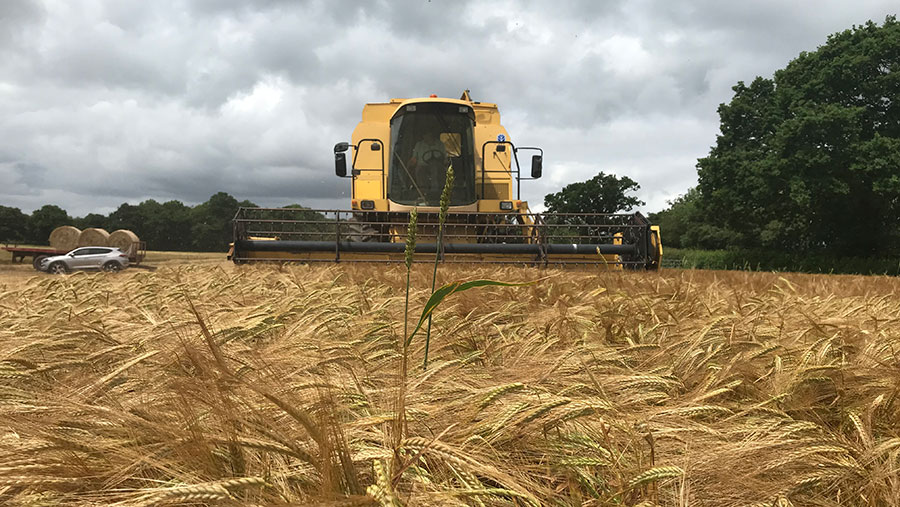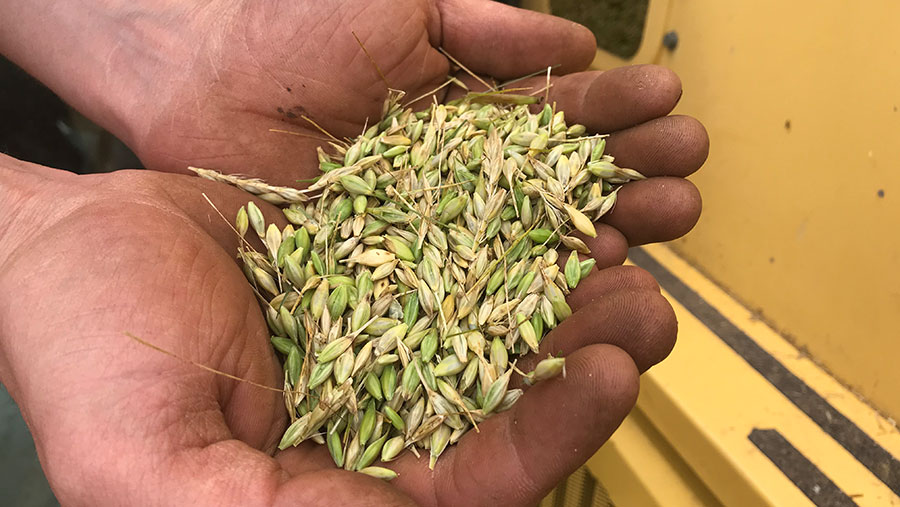First barley crimping harvest gets under way in Devon

The cereal harvest is kicking off with Devon farmer Roger Adams cutting his winter barley and then crimping the high-moisture content crop to feed his beef cattle.
In what is thought to be the UK’s first cereal harvest of the year, Mr Adams not only gets a ration for his beef cattle, but can now sow the land with grass seed to get a crop of silage in September.
The crimping process involves harvesting cereals early at grain moisture content of up to 45%, putting it through a crimping machine to expose the carbohydrate and protein, and then applying a preservative so the product can be fed throughout the year.
Mr Adams, who farms at Honeypark Farm near Cullompton with his son Craig, said although he hasn’t weighed the crop, he is confident yields are high and is expecting a fresh weight yield of about 12t/ha.
See also: Cereals 2018: Top-yielding winter barley variety launched
He is using the crimped barley to grow and finish 400 head of beef on the 162ha family farm. It is used in a completely home-grown ration that also includes grass and maize silage, dry rolled wheat and beans.

Home-grown ration
“Feeding a home-grown ration obviously saves us having to get the cheque book out to buy any cake, and feeding this total mixed ration means we can make sure the beef are all off the farm before they are 20 months old,” he said.
The crop was cut on Friday (15 June) and processed through a crimping machine – a KC 600 Bruiser – which flat-rolls the grain and applies the crimping preservative, Crimpsafe 300. This allows the crop to be stored in a clamp without any specialist facilities.
“The barley goes straight through the Bruiser and into the clamp, where it is rolled, compacted and sheeted in just the same way as silage,” said Mr Adams.
Ian Hall from crop preservation specialist Kelvin Cave said the reason barley harvested for crimping produces such a high dry matter yield is because it comes in from the field in good condition.
“It is usually harvested before there is any disease, shrivelling or loss of grain, and with the right preservative, a quick and controlled fermentation is achieved and the crop’s nutritional value is retained for long-term stable storage,” he added.

